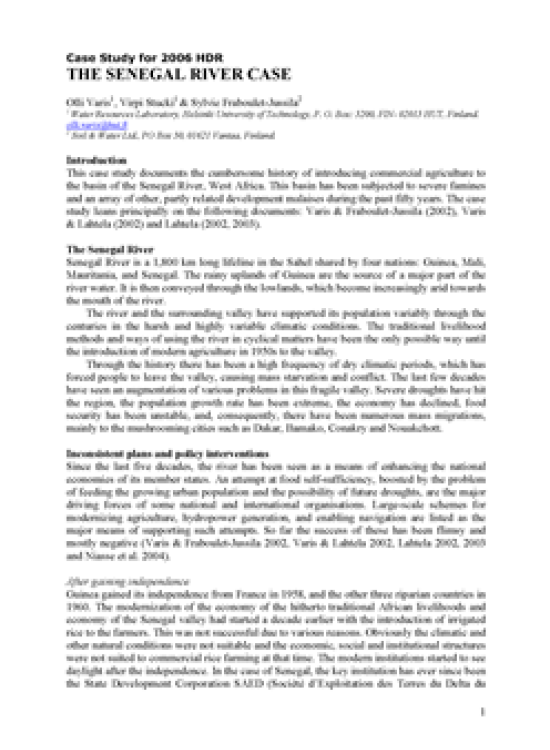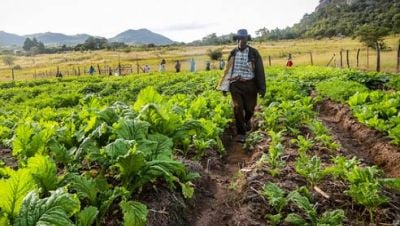The Senegal River Case

Download Report by Language
Document
ollivarissenegalrivercasestudy.pdf
(141.84 KB)
Citation
Varis, Olli, Stucki, Virpi, Fraboulet-Jussila, Sylvie. 2006. The Senegal River Case. New York.
The Senegal River Case
Posted on: January 01, 2006
This case study documents the cumbersome history of introducing commercial agriculture to the basin of the Senegal River, West Africa. This basin has been subjected to severe famines and an array of other, partly related development malaises during the past fifty years. The case study leans principally on the following documents: Varis & Fraboulet-Jussila (2002), Varis & Lahtela (2002) and Lahtela (2002, 2003). Senegal River is a 1,800 km long lifeline in the Sahel shared by four nations: Guinea, Mali, Mauritania, and Senegal. The rainy uplands of Guinea are the source of a major part of the river water. It is then conveyed through the lowlands, which become increasingly arid towards the mouth of the river. The river and the surrounding valley have supported its population variably through the centuries in the harsh and highly variable climatic conditions. The traditional livelihood methods and ways of using the river in cyclical matters have been the only possible way until the introduction of modern agriculture in 1950s to the valley. Through the history there has been a high frequency of dry climatic periods, which has forced people to leave the valley, causing mass starvation and conflict. The last few decades have seen an augmentation of various problems in this fragile valley. Severe droughts have hit the region, the population growth rate has been extreme, the economy has declined, food security has been unstable, and, consequently, there have been numerous mass migrations, mainly to the mushrooming cities such as Dakar, Bamako, Conakry and Nouakchott.

